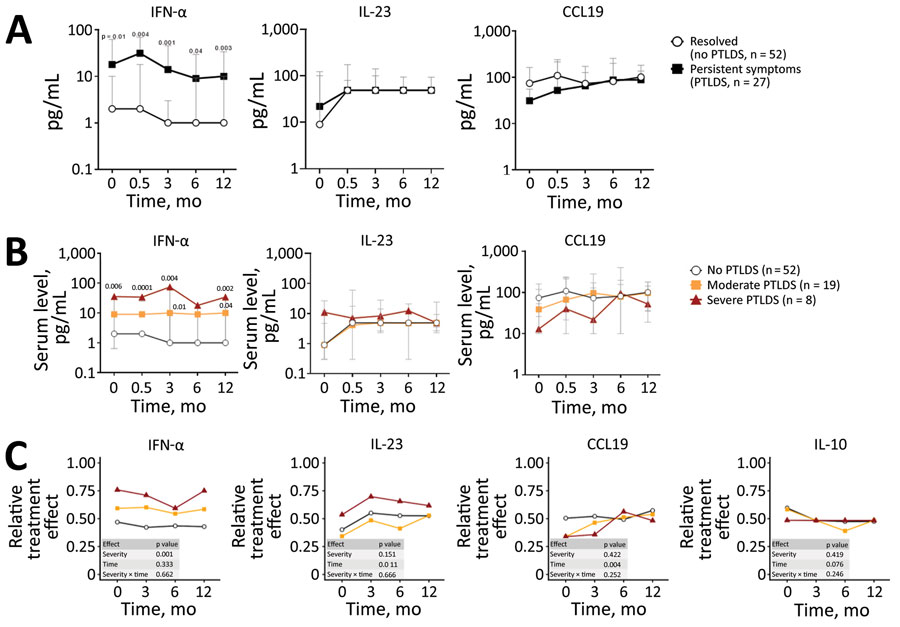Volume 29, Number 6—June 2023
Synopsis
Association of Persistent Symptoms after Lyme Neuroborreliosis and Increased Levels of Interferon-α in Blood
Figure 3

Figure 3. Cytokine and chemokine levels in serum of patients in Slovenia who had Lyme neuroborreliosis in study of association of persistent symptoms after Lyme neuroborreliosis and increased levels of interferon-α in blood. Prevalence of constitutional symptoms is stratified according to PTLDS severity during the 1-year follow-up period. A) Median serum levels of IFN-α, IL-23, and CCL19 during 1 year of follow-up stratified by presence or absence of PTLDS. B) Median serum levels of IFN-α, IL-23, and CCL19 graphed according to disease severity. p values above red line correspond to the comparison between patients with severe PTLDS vs those with no PTLDS (resolved). p values above yellow lines represent significant differences between the no PTLDS and moderate PTLDS groups. C) Analysis of variance comparison of relative effect of disease severity or time on cytokine levels in serum. Error bars indicate 10th–90th percentiles CIs. CCL, CC motif chemokine ligand; IFN, interferon; IL, interleukin; PTLDS, posttreatment Lyme disease symptoms or syndrome.